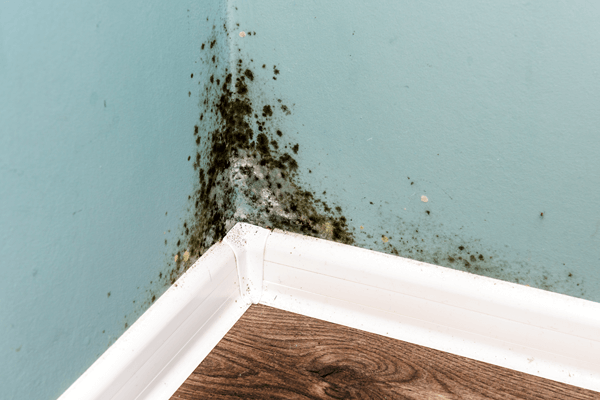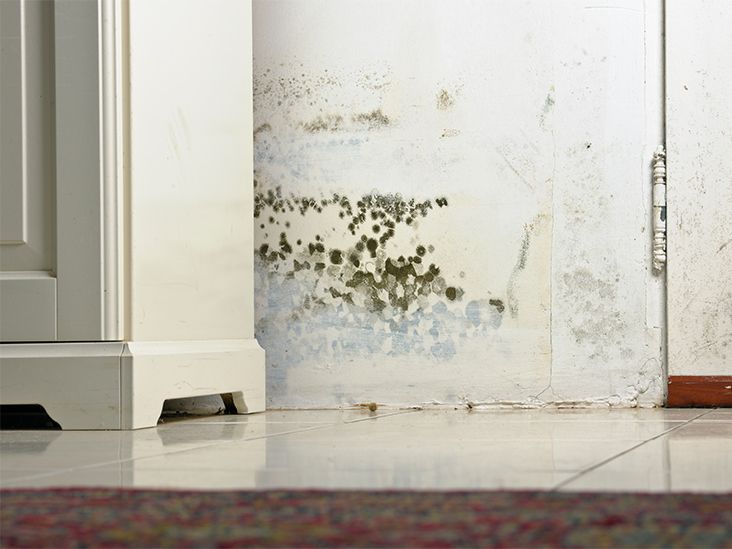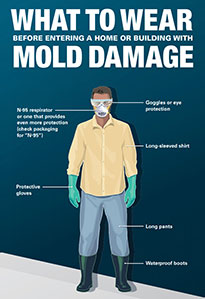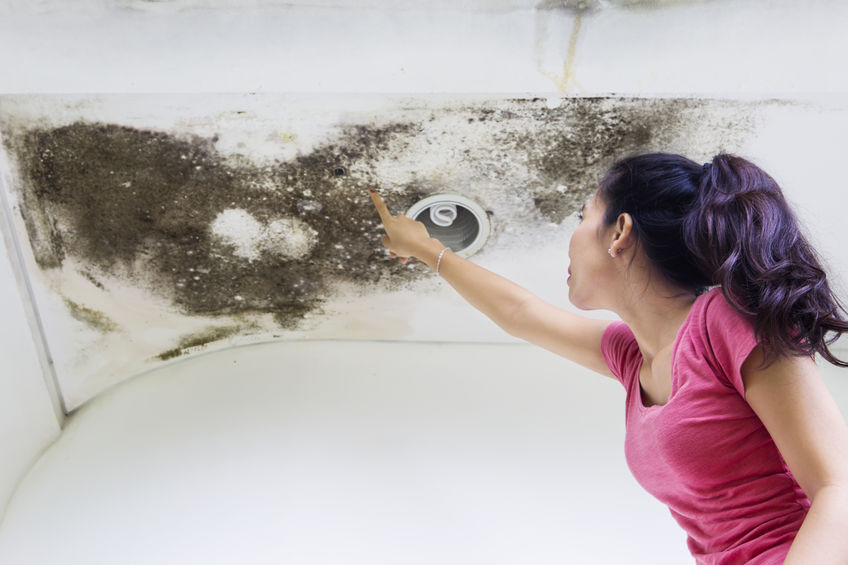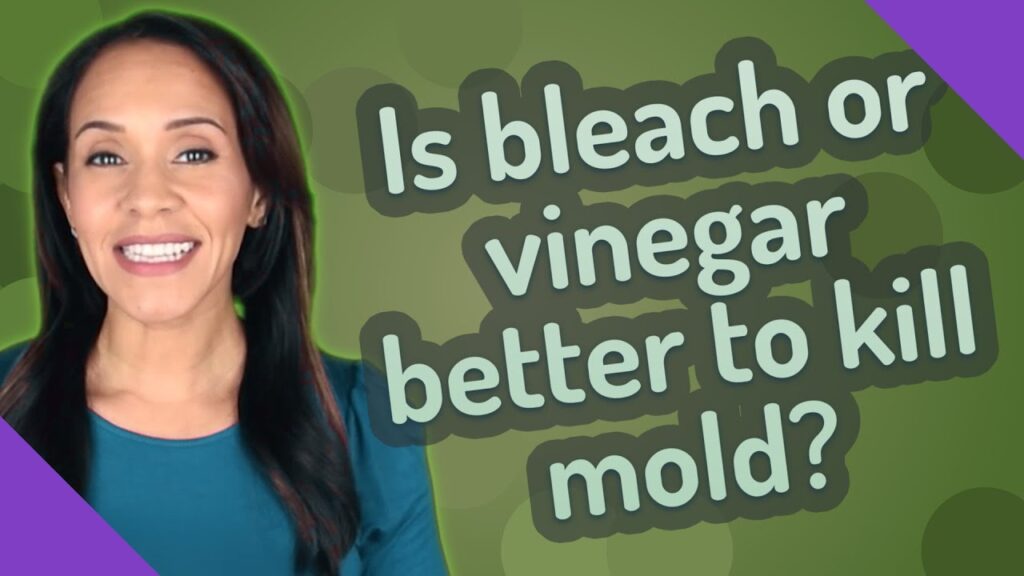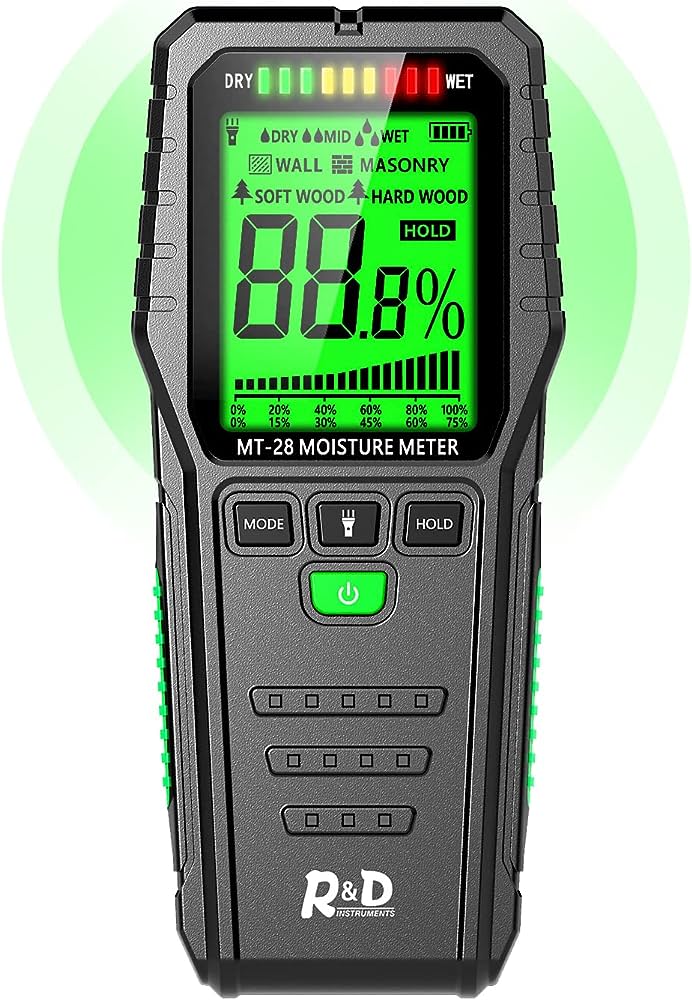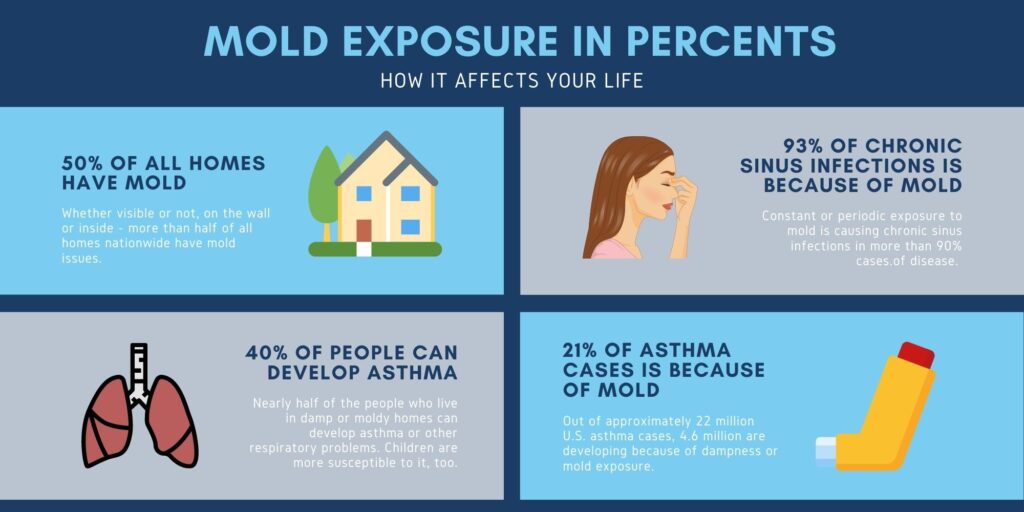If you’ve discovered mold on your drywall, you may be wondering if it needs to be removed. Mold can be a frustrating and potentially harmful issue to deal with, but the question of whether or not to remove the affected drywall isn’t always straightforward. In this article, we’ll explore the factors to consider when dealing with mold on drywall, helping you make an informed decision and tackle the situation effectively.
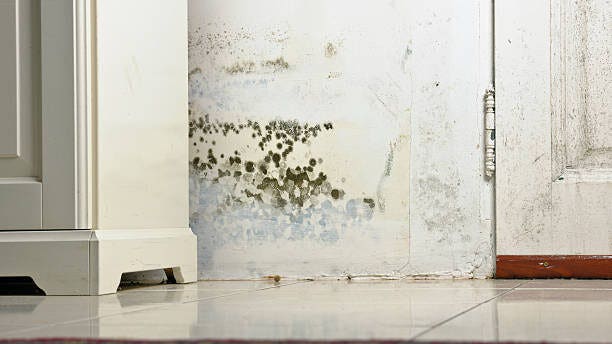

Overview
Understanding mold growth on drywall
Mold growth on drywall can occur when there is excess moisture or water damage. Mold spores, which are naturally present in the air, can settle on the surface of drywall and begin to grow and spread if the conditions are favorable. It is important to understand the factors that contribute to mold growth on drywall and the potential health risks associated with it.
Potential health risks
Mold on drywall can pose several health risks, especially for individuals with allergies, asthma, or compromised immune systems. When mold spores are inhaled or come into contact with the skin, they can cause allergic reactions, respiratory problems, and other health issues. It is crucial to address mold growth on drywall promptly to prevent these health risks from worsening.
Determining the extent of mold infestation
Before deciding whether drywall needs to be removed, it is essential to determine the extent of mold infestation. This involves assessing the type and severity of the mold, the size and location of the growth, as well as the age and condition of the drywall. Additionally, identifying and addressing the presence of a moisture source is crucial in preventing further mold growth.
Factors to consider
Type and severity of mold
Different types of molds have varying levels of health risks and require different remediation methods. Some molds, such as black mold, can be particularly harmful and may necessitate immediate and thorough removal. The severity of the mold growth, whether it is limited to a small area or has spread extensively, also impacts the necessary remediation approach.
Size and location of mold growth
The size and location of mold growth on drywall are important factors to consider. If the mold is limited to a small, isolated area, remediation may involve selectively removing only the affected sections. However, if the mold has spread extensively or reaches hidden areas, complete drywall removal may be necessary to ensure effective mold removal and prevent recurrent growth.
Age and condition of the drywall
The age and condition of the drywall can impact the decision of whether to remove it or attempt mold remediation. If the drywall is old, damaged, or weakened, it may be more prone to mold penetration and less likely to withstand remediation efforts. Newer drywall in good condition may be salvageable through appropriate remediation strategies.
Presence of moisture source
Identifying and addressing the underlying moisture source is crucial in determining whether drywall needs to be removed. If the moisture problem is not resolved, even after mold remediation, the mold is likely to return. It is important to fix leaks, improve ventilation, and address any other sources of excess moisture to prevent future mold growth.


Professional assessment
Benefits of hiring a mold remediation expert
Hiring a mold remediation expert offers several benefits. Professionals have the expertise and experience to accurately assess the mold infestation and determine the appropriate course of action. They are knowledgeable about the latest techniques and equipment for mold removal and can ensure thorough remediation and prevention of further mold growth.
The importance of an initial inspection
An initial inspection by a mold remediation expert is crucial in understanding the extent of the mold infestation. Through visual examination and potentially using specialized equipment, such as moisture meters and thermal imaging cameras, the expert can identify hidden mold and assess the severity of the problem. This inspection provides the foundation for developing an effective remediation plan.
Qualified mold testing and sampling methods
In some cases, mold testing and sampling may be necessary to identify the specific type of mold and determine its concentration. Mold remediation experts can perform these tests using reliable methods, such as air sampling and swab sampling. These tests help in assessing the potential health risks and guiding the appropriate remediation approach.
Remediation options
Complete drywall removal
Complete drywall removal involves removing all the affected drywall, including the visible and hidden mold growth. This option is often recommended for extensive mold infestations or when the drywall is severely damaged or weakened. It allows for thorough removal of the mold, ensuring a clean and mold-free surface for repair and restoration.
Partial drywall removal
In cases of localized mold growth, partial drywall removal may be an option. This involves selectively removing only the sections of drywall that are affected by mold. It requires precision and care to ensure that no mold-contaminated materials are left behind. After removal, the remaining drywall can be cleaned and treated to prevent further mold growth.
Alternative treatments for mold removal
In some situations, alternative treatments may be considered instead of or in conjunction with drywall removal. These treatments include the use of specialized mold remediation products, such as mold-resistant coatings and encapsulants, which can help inhibit mold growth and prevent its recurrence. Alternative treatments may be suitable for minor mold infestations or when complete drywall removal is not feasible.


Complete drywall removal
Process of removing affected drywall
When complete drywall removal is necessary, a careful and systematic process is followed. First, the area is sealed off to minimize the spread of mold spores. Then, using appropriate protective gear, the affected drywall is cut out and carefully removed. The remaining surfaces are thoroughly cleaned and treated to eliminate any residual mold spores.
Determining the scope of removal
Before starting the drywall removal process, it is crucial to determine the scope of removal. This involves identifying the extent of mold growth, whether it has spread behind the drywall or into adjacent areas. Properly assessing the scope ensures that all affected areas are addressed, preventing the potential for recurrent mold growth.
Considerations when hiring professionals
When hiring professionals for complete drywall removal, it is important to select reputable and experienced mold remediation companies. Check for certifications and licenses, and inquire about their previous experience with similar projects. Additionally, obtain detailed cost estimates and compare different companies to ensure you receive quality service at a fair price.
Partial drywall removal
Selective removal of affected sections
Partial drywall removal involves selectively removing only the sections of drywall that are affected by mold. This can be a more cost-effective option when the mold growth is limited to specific areas. The process requires precision and care to ensure that the mold is completely removed and does not spread during the removal process.
Evaluating the potential risks
When considering partial drywall removal, it is important to evaluate the potential risks involved. If the mold growth has spread extensively or reaches hidden areas, it may be challenging to effectively remove all the mold without damaging the drywall further. In such cases, complete drywall removal may be a more suitable option to ensure thorough remediation.
Procedures for repair and restoration
After removing the affected sections of drywall, proper procedures for repair and restoration should be followed. This includes replacing the removed drywall with new, mold-resistant materials, ensuring proper sealing and insulation. Additionally, it is essential to address any underlying moisture issues to prevent future mold growth and maintain a healthy environment.
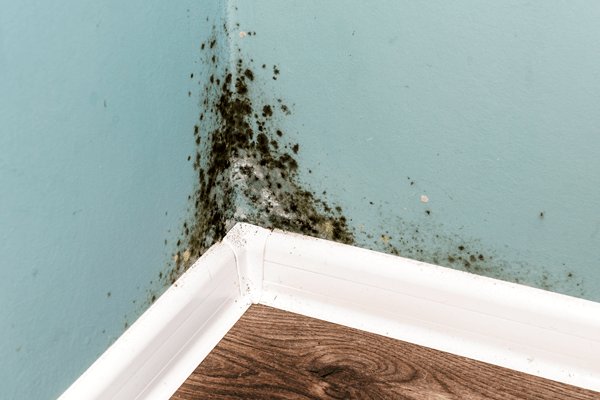

Alternative treatments for mold removal
Professional mold remediation techniques
Mold remediation experts may utilize various professional techniques to treat mold growth on drywall. These techniques can include the use of specialized cleaning agents, dry ice blasting, or air scrubbers to remove mold spores from the surface and the air. Professional techniques are typically effective in eliminating mold and preventing its recurrence.
Non-toxic mold removal options
For those concerned about the use of harsh chemicals during mold removal, non-toxic options are available. Non-toxic mold removal methods utilize natural ingredients, such as vinegar or hydrogen peroxide, to clean and remove mold from drywall. While these methods may be suitable for minor mold infestations, they may not be as effective for more severe cases.
Effectiveness and limitations
While alternative treatments for mold removal can be effective in certain situations, it is important to understand their limitations. They may not be as thorough in removing mold from hidden areas or addressing underlying moisture issues. Alternative treatments should be evaluated based on the severity of the mold infestation and the specific requirements of the situation.
Prevention and mitigation
Addressing underlying moisture issues
Prevention and mitigation of mold growth on drywall involve addressing underlying moisture issues. This includes promptly fixing any leaks or water damage, improving ventilation in high-moisture areas like bathrooms and kitchens, and controlling humidity levels through the use of dehumidifiers or air conditioning. By minimizing excess moisture, the conditions for mold growth can be significantly reduced.
Regular maintenance and inspections
Regular maintenance and inspections of drywall can help prevent mold growth. This includes keeping the drywall clean and dry, promptly repairing any cracks or damage, and ensuring proper sealing around windows and doors to prevent water intrusion. Regular inspections can identify early signs of mold growth, allowing for prompt remediation and mitigation measures.
Effective ventilation and humidity control
Proper ventilation and humidity control are essential in preventing mold growth on drywall. Ensuring adequate airflow in areas prone to moisture, such as bathrooms and basements, can help prevent the buildup of excess moisture. Additionally, using exhaust fans and opening windows when necessary can help remove moisture and maintain optimal humidity levels.
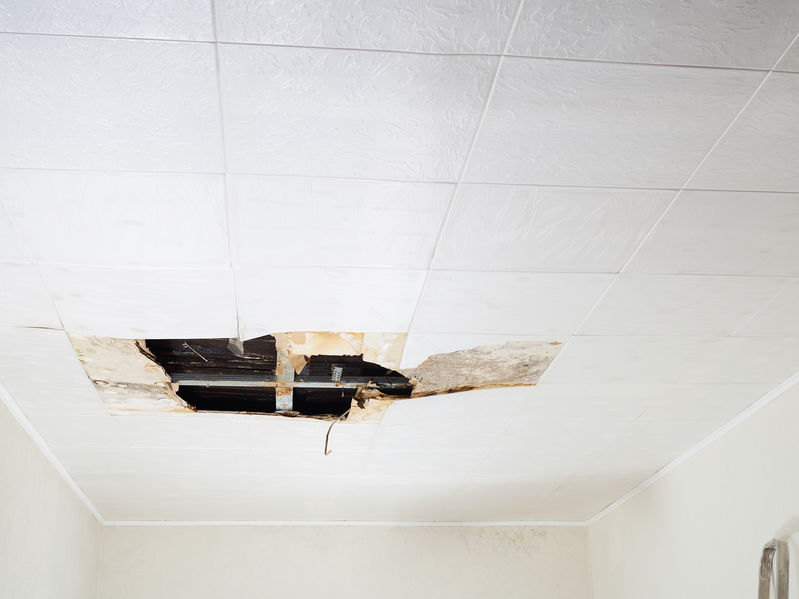

Personal safety precautions
Wearing appropriate protective gear
When undertaking any mold remediation activities, it is important to prioritize personal safety. This includes wearing appropriate protective gear, such as gloves, goggles, and respiratory masks, to minimize exposure to mold spores and potential health risks. Protective gear helps prevent inhalation or skin contact with mold and reduces the risk of allergic reactions or respiratory problems.
Proper handling and disposal of contaminated materials
Proper handling and disposal of mold-contaminated materials are crucial to prevent the spread of mold spores. This involves sealing off the area to contain the mold, using plastic sheets or barriers, and carefully bagging and sealing the removed drywall or other materials. Disposal should follow local regulations and guidelines for hazardous waste to ensure appropriate handling.
Minimizing exposure during remediation
During mold remediation, it is essential to minimize exposure to mold spores. This can be accomplished by sealing off the affected area, limiting access to the space, and using containment measures, such as negative air pressure and air scrubbers, to prevent the spread of mold spores. Minimizing exposure reduces the risk of respiratory problems and allergic reactions.
Conclusion
The importance of prompt remediation
When mold growth is detected on drywall, prompt remediation is crucial to prevent further damage and potential health risks. Whether through complete drywall removal, partial removal, or alternative treatments, addressing the mold infestation promptly reduces the likelihood of recurrent growth and minimizes health hazards associated with mold exposure.
Considering professional expertise
In many cases, it is advisable to seek the expertise of mold remediation professionals. Their knowledge, experience, and use of specialized techniques and equipment ensure thorough mold removal and proper prevention measures. Professionals can assess the extent of the mold infestation, develop a tailored remediation plan, and provide guidance on preventive measures to maintain a healthy and mold-free environment.
Maintaining a healthy and mold-free environment
Taking proactive measures, such as addressing underlying moisture issues, regular maintenance and inspections, and effective ventilation, is essential in maintaining a healthy and mold-free environment. By preventing mold growth on drywall and promptly addressing any signs of mold infestation, you can ensure the well-being and safety of yourself and those around you.

